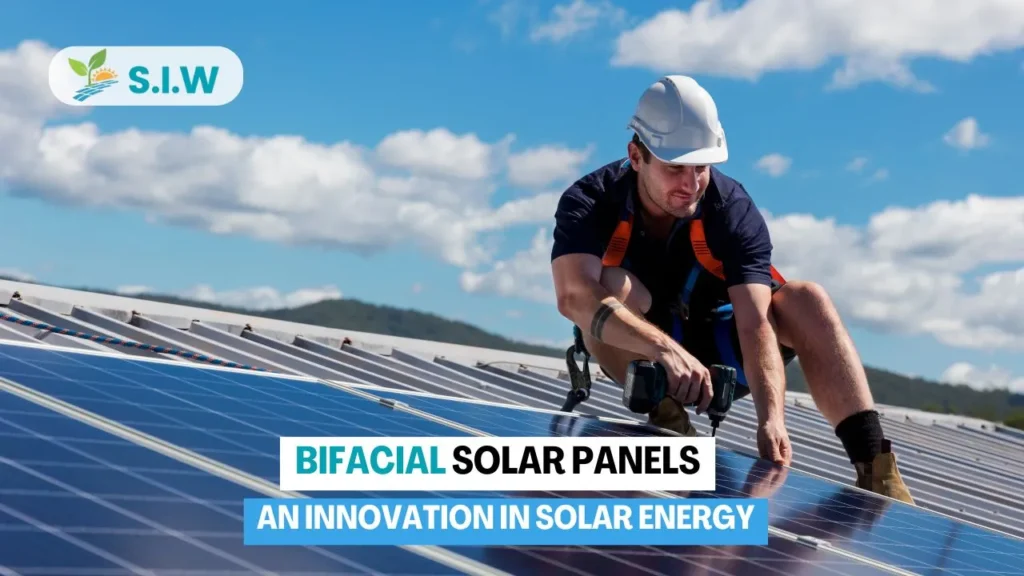Bifacial solar panels represent a significant advancement in photovoltaic (PV) technology, offering higher efficiency and energy output compared to traditional monofacial panels. By harnessing sunlight from both the front and rear sides, bifacial panels maximize energy capture and have the potential to revolutionize solar energy production.
Key Features of Bifacial Solar Panels:
- Dual-Sided Energy Capture: Unlike monofacial panels that only capture sunlight from one side, bifacial solar power systems for home are designed to absorb light from both the front and rear surfaces. This design allows them to utilize reflected and diffused light, increasing their overall energy generation.
- Durability and Longevity: Bifacial panels are often made with robust materials and advanced manufacturing techniques, ensuring higher durability and longer lifespans. This makes them suitable for various environments, including harsh and challenging conditions.
- Advanced Efficiency: The ability to capture light from both sides can boost the efficiency of bifacial panels by 10-30% compared to traditional panels, depending on installation and environmental factors.
Benefits of Bifacial Solar Panels
- Increased Energy Output: By capturing additional sunlight from the rear side, bifacial panels can generate more electricity per square meter. This increased output can lead to better performance in both residential and commercial installations.
- Space Efficiency: Bifacial panels provide higher energy output without requiring additional space. This makes them an excellent choice for installations with limited area, such as rooftops or urban environments.
- Lower Levelized Cost of Electricity (LCOE): The higher energy production of bifacial panels can reduce the LCOE, making solar projects more economically viable. Over the lifespan of the panels, the increased output can offset the initial higher costs associated with bifacial technology.
- Aesthetic and Functional Flexibility: Bifacial panels can be integrated into a variety of architectural designs, such as solar carports, façades, and canopies, providing both functional energy production and aesthetic appeal.
Applications of Bifacial Solar Panels
- Utility-Scale Solar Farms: Bifacial panels are particularly well-suited for large-scale solar farms where maximizing energy production is critical. Their ability to capture reflected light from the ground or surrounding surfaces can significantly boost overall output.
- Commercial and Industrial Installations: Businesses and industrial facilities can benefit from bifacial panels’ enhanced efficiency, reducing energy costs and improving sustainability. They are ideal for installations on large rooftops, parking structures, and open areas.
- Residential Solar Systems: Homeowners looking to maximize their solar energy generation can opt for bifacial panels. When installed on rooftops or as part of solar awnings and pergolas, they can provide additional energy and improve the home’s energy independence.
- Agrivoltaics: Bifacial panels can be integrated into agricultural settings, allowing for dual land use. They provide shade for crops while generating electricity, creating a symbiotic relationship between energy production and agriculture.
Economic Considerations
Higher Initial Cost
Bifacial panels generally have a higher upfront cost compared to traditional panels due to their advanced technology and materials. However, their increased energy yield can offset this initial investment over time.
Return on Investment
The increased energy production from bifacial panels can lead to higher returns on investment, especially in areas with high albedo or where maximizing energy production is critical.
Incentives and Rebates
Check for any available incentives or rebates that may apply to bifacial or commercial solar panels installations, which can help reduce the overall cost.
Installation Considerations
- Optimal Placement: To maximize the benefits of bifacial panels, careful consideration must be given to their placement and orientation. Elevating the panels to allow light to reach the rear side and using reflective surfaces beneath them can enhance performance.
- Ground Surface Albedo: The reflective quality of the ground surface (albedo) beneath the panels plays a significant role in their efficiency. Surfaces with high albedo, such as white gravel or reflective membranes, can increase the amount of light reaching the rear side of the panels.
- Angle and Tilt: Adjusting the angle and tilt of bifacial panels can optimize their exposure to sunlight and reflected light. Tracking systems can also be used to follow the sun’s path, further boosting energy capture.
Challenges and Future Prospects:
- Higher Initial Costs: Bifacial panels tend to have higher upfront costs compared to monofacial panels. However, the increased energy output can justify the investment over time.
- Standardization and Testing: As bifacial technology is relatively new, industry standards and testing methodologies are still evolving. Continued research and development are necessary to establish benchmarks and optimize performance.
Conclusion
Bifacial solar panels represent a cutting-edge advancement in solar technology, offering significant benefits in terms of efficiency, energy output, and versatility. As the demand for sustainable and renewable energy solutions continues to grow, bifacial panels are poised to play a crucial role in meeting these needs. With ongoing improvements in technology and installation practices, bifacial solar panels will likely become a mainstream choice for various applications, contributing to a cleaner and more energy-efficient future.








